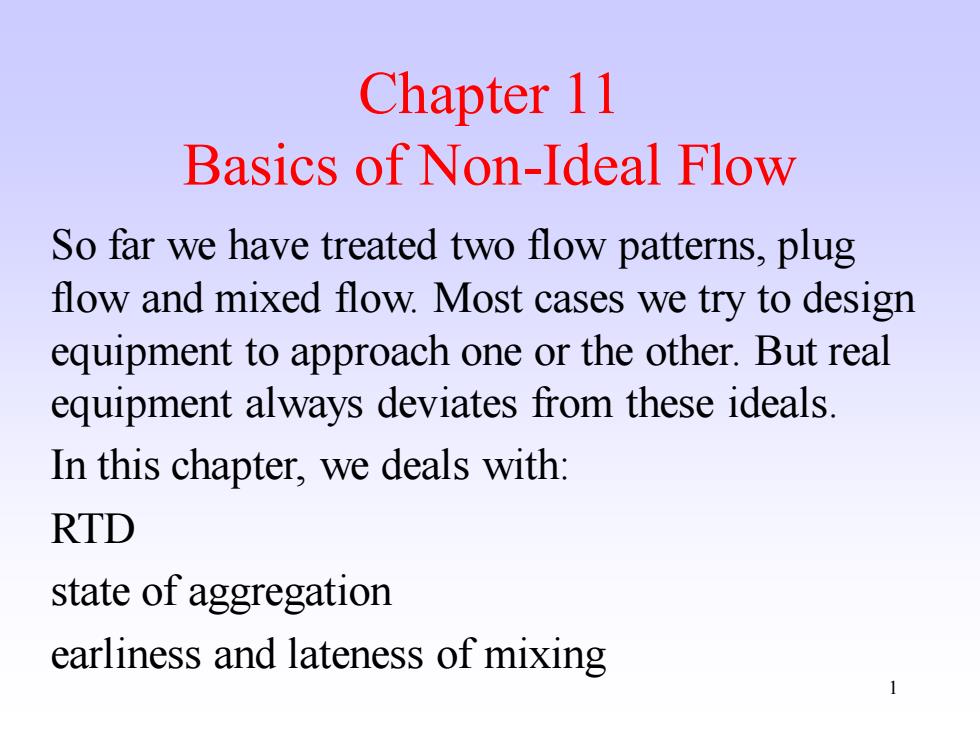
Chapter 11 Basics of Non-Ideal Flow So far we have treated two flow patterns,plug flow and mixed flow.Most cases we try to design equipment to approach one or the other.But real equipment always deviates from these ideals. In this chapter,we deals with: RTD state of aggregation earliness and lateness of mixing 1
1 Chapter 11 Basics of Non-Ideal Flow So far we have treated two flow patterns, plug flow and mixed flow. Most cases we try to design equipment to approach one or the other. But real equipment always deviates from these ideals. In this chapter, we deals with: RTD state of aggregation earliness and lateness of mixing
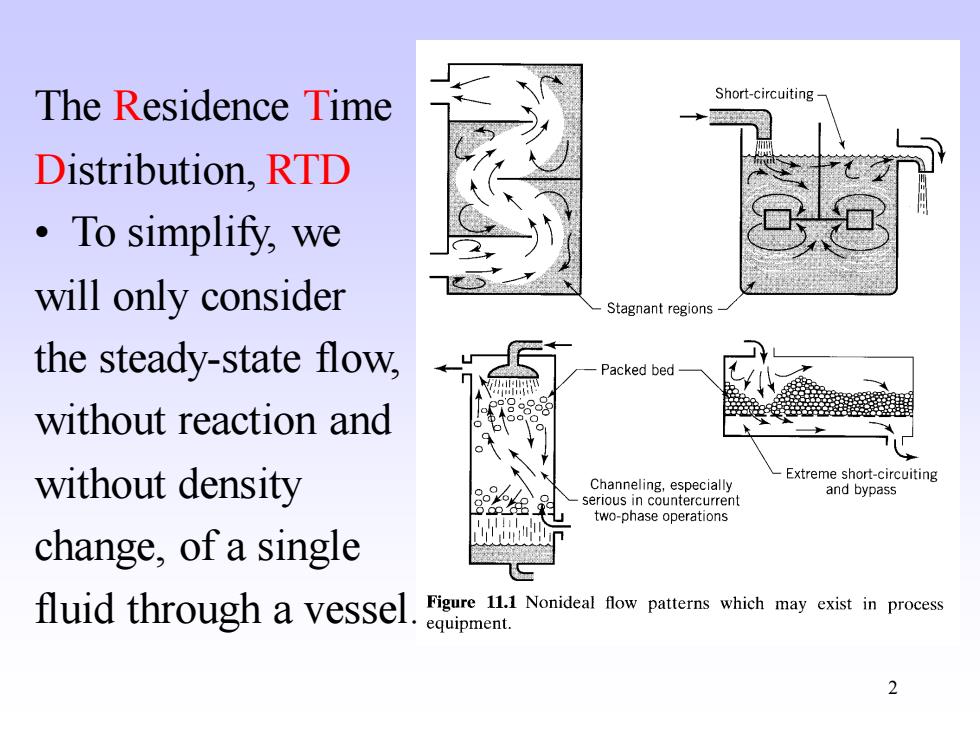
The Residence Time Short-circuiting- Distribution,RTD ·To simplify,.we will only consider Stagnant regions the steady-state flow, Packed bed without reaction and without density Channeling,especially Extreme short-circuiting and bypass serious in countercurrent two-phase operations change,of a single fuid through a vesse Nonidealatems which mayin roce equipment. 2
2 The Residence Time Distribution, RTD • To simplify, we will only consider the steady-state flow, without reaction and without density change, of a single fluid through a vessel
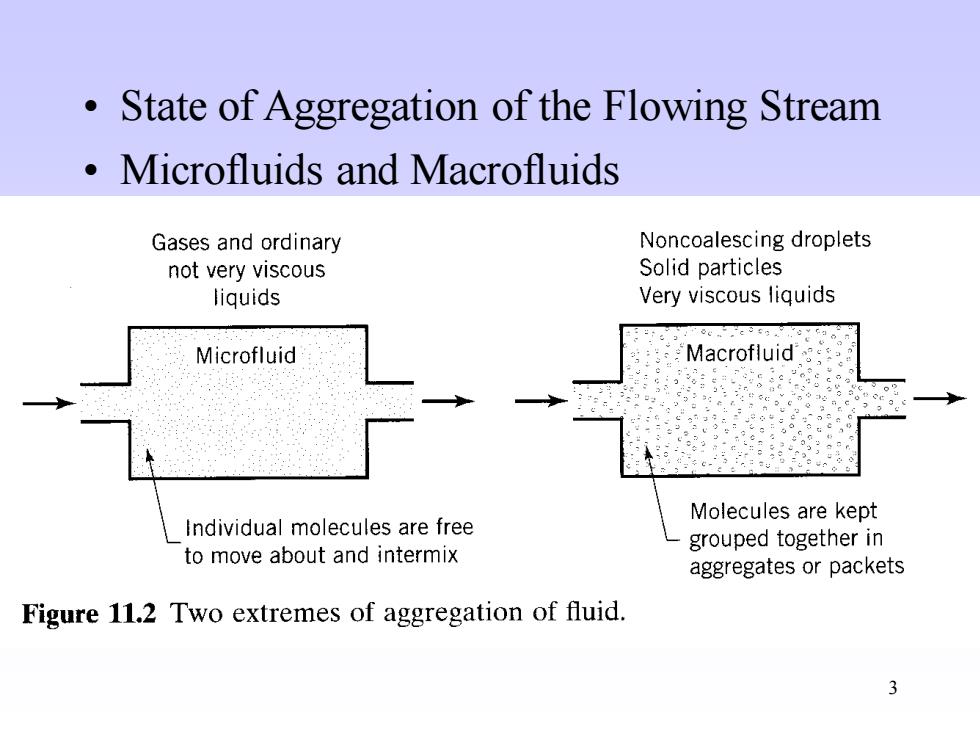
State of Aggregation of the Flowing Stream Microfluids and Macrofluids Gases and ordinary Noncoalescing droplets not very viscous Solid particles liquids Very viscous liquids Microfluid Macrofluid Molecules are kept Individual molecules are free grouped together in to move about and intermix aggregates or packets Figure 11.2 Two extremes of aggregation of fluid. 3
3 • State of Aggregation of the Flowing Stream • Microfluids and Macrofluids
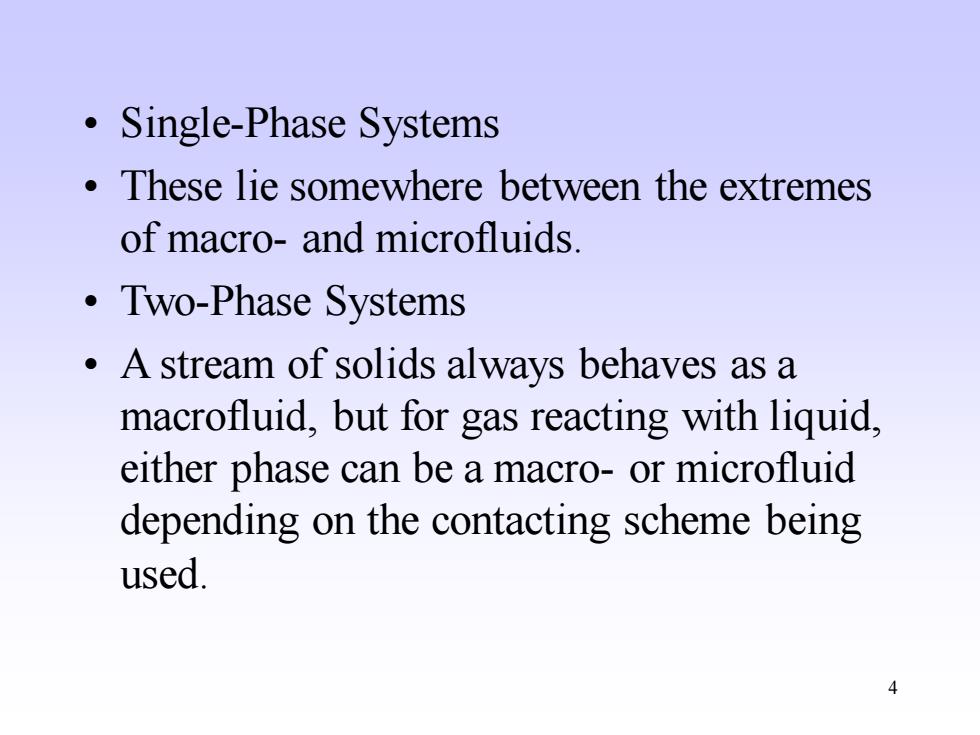
Single-Phase Systems These lie somewhere between the extremes of macro-and microfluids. ·Two-Phase Systems A stream of solids always behaves as a macrofluid,but for gas reacting with liquid, either phase can be a macro-or microfluid depending on the contacting scheme being used. 4
4 • Single-Phase Systems • These lie somewhere between the extremes of macro- and microfluids. • Two-Phase Systems • A stream of solids always behaves as a macrofluid, but for gas reacting with liquid, either phase can be a macro- or microfluid depending on the contacting scheme being used
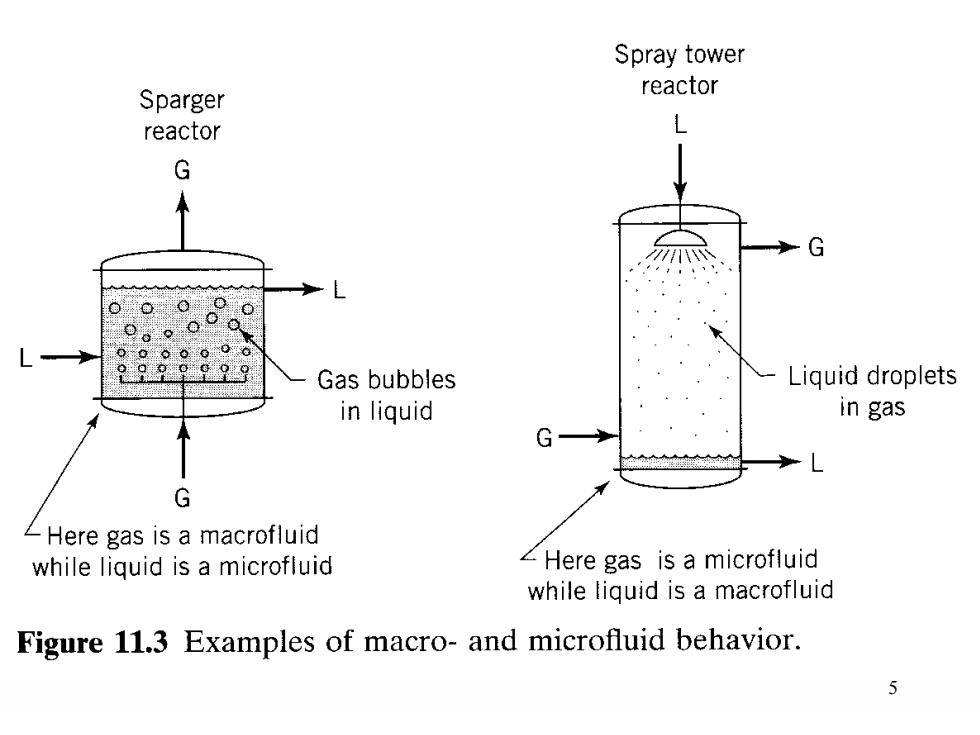
Spray tower Sparger reactor reactor L G G Gas bubbles Liquid droplets in liquid in gas G -Here gas is a macrofluid while liquid is a microfluid -Here gas is a microfluid while liquid is a macrofluid Figure 11.3 Examples of macro-and microfluid behavior. 5
5